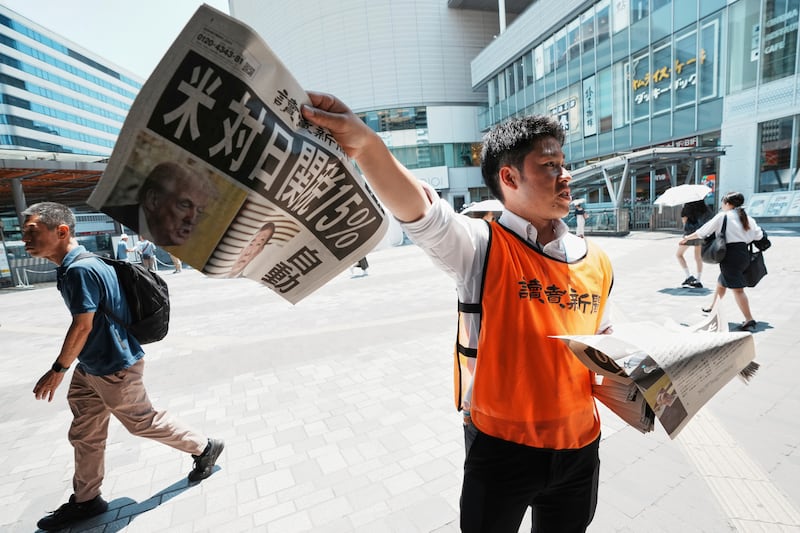- President Trump announced a landmark trade deal with Japan.
- The agreement includes 15% levy on Japanese import products including automobiles.
- Japan says it's the best deal yet for country that has a trade surplus with U.S.
President Donald Trump announced what he described as a “massive” trade deal with Japan in a Monday night social media post. The agreement sets the tariff rate on imports from the country — the fifth largest U.S. trading partner — at 15%.
Trump said the new pact also includes a promise from Japan to invest over $500 billion in the U.S., though details and a timeline for that commitment were sparse.
The announcement comes just ahead of an Aug. 1 deadline, after which blanket reciprocal tariffs of 25% kick in for U.S. trading partners that haven’t negotiated individual deals.
In a post on Truth Social, Trump said the agreement will lead to new jobs and open Japanese markets to U.S. businesses.
“We just completed a massive Deal with Japan, perhaps the largest Deal ever made,” Trump wrote. “Japan will invest, at my direction, $550 Billion Dollars into the United States, which will receive 90% of the Profits. This Deal will create Hundreds of Thousands of Jobs — There has never been anything like it.

“Perhaps most importantly, Japan will open their Country to Trade including Cars and Trucks, Rice and certain other Agricultural Products, and other things. Japan will pay Reciprocal Tariffs to the United States of 15%. This is a very exciting time for the United States of America, and especially for the fact that we will continue to always have a great relationship with the Country of Japan. Thank you for your attention to this matter!”
The tariff agreement stipulates that the 15% levy will also apply to U.S. imports of Japanese made automobiles, a carveout from the 25% sector levy on automobile imports Trump announced in March.
Automobile exports to the U.S. are a bedrock ofJapan’s economy, making up 28.3% of all shipments in 2024, according to customs data and cited in a report from CNBC.
“A year ago, that level of tariffs (15%) would be shocking,” Brian Jacobsen, chief economist at Annex Wealth Management, told CNBC. “Today, we breathe a sigh of relief.”
Japanese trade representative Ryosei Akazawa told reporters Tuesday that the deal represents the lowest tariff rate for a country that has a trade surplus with the U.S., according to CNN, and was “the first in the world to be able to reduce tariffs on automobiles and auto parts without volume restrictions.”

Akazawa also offered some insight into how the $550 billion in future U.S. investments may be deployed, noting it would come in the form of equity and loans to support Japanese businesses’ investments in key fields such as pharmaceuticals and semiconductors.
How Utahns see Trump’s tariff strategy
Recent statewide polling conducted by the Deseret News in partnership with the University of Utah’s Hinckley Institute of Politics finds Utahns are of decidedly mixed sentiments when it comes to the president’s approach to trade tariff policy.
When asked, “Do you support or oppose the Trump Administration’s tariff program?”, 50% of respondents weighed-in as somewhat or strongly in support of Trump’s tariff plans while 44% somewhat or strongly opposed the president’s trade policies. Of those in the support group, 69% were self-identified Republicans and 19% Democrats. In the opposition category, 25% were Republicans and 81% Democrats.
The Deseret News/Hinckley Institute polling also sought to learn more about how Utahns are feeling about the execution of Trump’s tariff plans.

When asked “Which comes closest to your views of the Trump administration’s tariff policies?” and given three response options, 19% of respondents aligned with “It’s the right idea but has been executed badly,” 53% chose “It’s the right idea but requires more time to work,” and 28% opted for “It’s the wrong idea regardless of execution and time required.”
The partisan divide for the first response was about even but in the “right idea, executed badly” group, 69% of poll participants were Republicans and 22% Democrats. Among the “wrong idea, regardless” respondents, 12% were Republicans and 64% Democrats.


